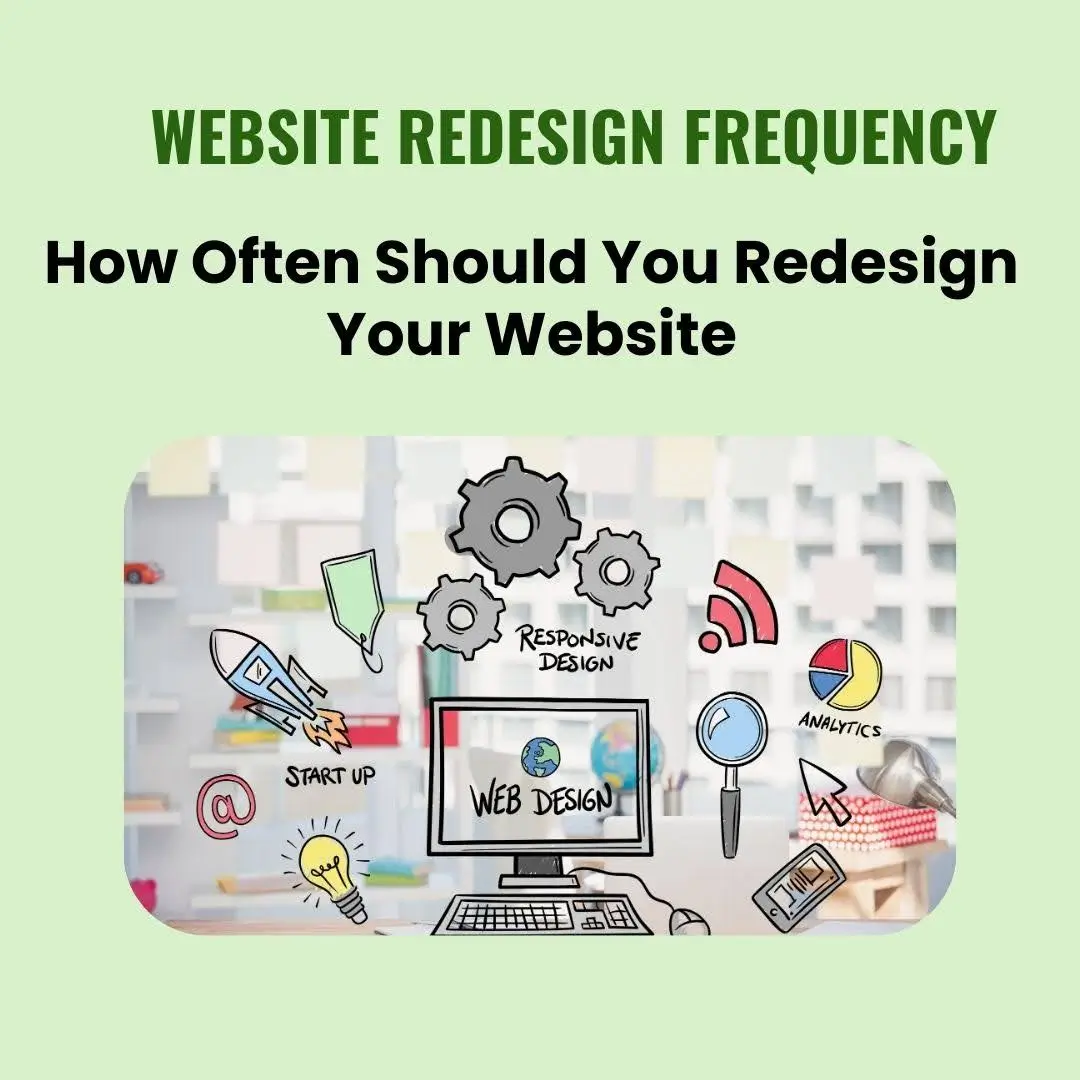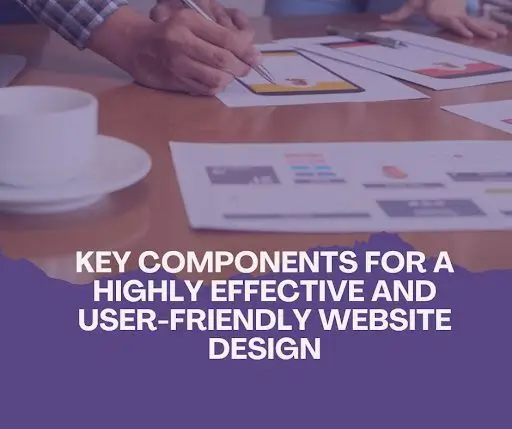In today’s digital age, having a strong online presence is crucial for the success of small businesses. With the increasing influence of the internet on consumer behavior, it is essential for small businesses to invest in website development to stay competitive and engage with their target audience effectively. In this blog post, we will explore the importance of website development for small business, key elements of effective website development, best practices, and how to overcome common challenges.
The Influence of Online Presence on Consumer Behavior
Statistics have shown that a strong online presence can significantly impact consumer behavior. According to a study by Retailing Today, 81% of shoppers conduct online research before making a purchase. This highlights the importance of having a well-developed website that provides relevant information and engages potential customers.
While offline marketing strategies such as print ads and direct mail can still be effective, online marketing offers unique advantages. Online marketing allows for targeted advertising, real-time engagement with customers, and the ability to track and analyze data to optimize marketing efforts. Website development for small business plays a crucial role in facilitating online marketing strategies and reaching a wider audience.
Why Website Development Is Important for Small Business
Online Presence
A well-designed website serves as a digital storefront for your business, providing potential customers with valuable information about your products or services. It also allows for online transactions, making it convenient for customers to purchase your offerings directly through the website. Additionally, an online presence lets you gather valuable data and insights about customer behavior through analytics tools, helping you make informed business decisions.
Branding
A professionally developed website contributes to building a strong brand identity and creates a positive impression of your business. By incorporating consistent branding elements such as logos, color schemes, and messaging across the website, you reinforce brand recognition among your target audience. Furthermore, a well-crafted website design can evoke emotions and establish a memorable connection with visitors, enhancing brand loyalty.
Customer Reach
With a website, your business can reach a global audience, breaking geographical barriers and expanding your customer base. Utilizing search engine optimization (SEO) techniques can improve your website’s visibility on search engines, attracting organic traffic from diverse regions. Moreover, multilingual support on your website can cater to a wider audience, increasing the potential for international growth and market penetration.
Credibility
A well-maintained website instills trust and credibility in potential customers, demonstrating that your business is legitimate and reliable. Additionally, regularly updating your website with fresh content, testimonials, and case studies can showcase ongoing activity and success stories, reinforcing trust with visitors. Implementing security measures such as SSL certificates, secure payment gateways, and data encryption on your website can enhance credibility by safeguarding customer information and ensuring a safe browsing experience.
Marketing Opportunities
A website opens up various marketing channels such as content marketing, email marketing, and social media integration. By regularly updating your website with engaging content such as blog posts, articles, and videos, you can attract and retain visitors, ultimately converting them into loyal customers. Email marketing campaigns integrated with your website can help nurture leads, drive conversions, and foster long-term relationships with your audience. Additionally, social media integration allows for seamless website content sharing across different platforms, enhancing brand visibility and driving traffic to your site.
Competitive Advantage
In today’s competitive market, a well-developed website sets your business apart from competitors and positions you as a leader in your industry. Implementing innovative features on your website, such as interactive tools, virtual tours, or personalized recommendations, can differentiate your brand and enhance the overall user experience. Furthermore, leveraging customer testimonials, case studies, and awards on your website can showcase your expertise and credibility, influencing potential customers to choose your business over competitors.
Customer Engagement
A website enables meaningful engagement with customers through features such as blogs, forums, and interactive content. Hosting webinars, live chats, or Q&A sessions on your website can facilitate direct customer interactions, fostering a sense of community and loyalty. Implementing gamification elements or interactive quizzes can also increase user engagement and encourage visitors to spend more time on your site, leading to higher conversion rates and customer satisfaction.
Accessibility
An online presence ensures your business is accessible 24/7, allowing customers to find information and purchase conveniently. Providing a user-friendly interface and mobile-responsive design on your website ensures a seamless browsing experience across devices, accommodating customers who prefer to shop or research on-the-go. Moreover, offering multiple contact options such as live chat support, contact forms, and FAQs can enhance customer service and support, addressing inquiries promptly and building trust with visitors.
Scalability
As your business grows, a well-developed website can easily accommodate expansion and evolving needs. Implementing scalable features such as e-commerce capabilities, membership portals, or booking systems allows your website to handle increased traffic and transactions as your business expands. Additionally, integrating customer relationship management (CRM) tools or automation software can streamline processes and improve efficiency, supporting growth and scalability in the long run.
Cost-Effectiveness
Compared to traditional marketing methods, investing in website development offers long-term cost-effectiveness and a higher return on investment. By reducing the need for printed materials, physical storefronts, or traditional advertising channels, a well-maintained website can significantly lower operational costs while reaching a wider audience. Furthermore, tracking and analyzing website performance metrics such as conversion rates, traffic sources, and user behavior enables you to optimize marketing strategies and allocate resources effectively, maximizing the ROI of your online presence.
Key Elements of Effective Website Development
Creating a strong online presence is vital for small businesses in today’s digital age. Achieving this effectively involves focusing on website development for small business, ensuring relevance and simplicity in the process. Your website serves as the virtual storefront for your business, making it crucial to ensure it’s well-designed and functional. In this blog series, we’ll explore the essential elements of website development and how it can empower your small business to reach new heights online.
Responsive Design for Mobile Compatibility
In today’s mobile-centric world, ensuring your website is responsive and mobile-friendly is crucial for providing a seamless user experience across devices. Responsive design allows your site to adapt to different screen sizes, improving accessibility and engagement for mobile users. Tools like Google’s Mobile-Friendly Test can help you assess and optimize your website’s mobile compatibility.
User-Friendly Navigation and Interface
A clear and intuitive navigation system is key to guiding visitors through your website efficiently. By organizing content logically, using descriptive labels for menus, and minimizing clicks to essential pages, you can enhance user experience and encourage exploration. Consider user testing and heatmapping tools like Hotjar or Crazy Egg to optimize navigation based on user behavior and feedback.
Quality Content Creation and Optimization
Compelling and relevant content optimized for search engines improves visibility and attracts organic traffic to your website. Creating high-quality, relevant content is essential for engaging visitors and boosting search engine visibility. Focus on crafting valuable content that addresses user needs, incorporates targeted keywords, and follows SEO best practices. Tools like SEMrush or Ahrefs can assist in keyword research, content optimization, and monitoring your website’s SEO performance.
Integration of SEO Best Practices
Implementing SEO best practices is crucial for improving your website’s search engine rankings and driving organic traffic. Optimize meta tags, headings, image alt text, and internal linking to enhance your site’s visibility in search results. Regularly monitor your site’s performance using tools like Google Search Console or Moz to track keyword rankings, organic traffic, and SEO insights.
Importance of Security Measures and SSL Certification
Protecting customer data and ensuring secure transactions is paramount for building trust and credibility. Prioritizing website security with SSL certification helps protect sensitive data, build trust with visitors, and improve search engine rankings. Implementing security measures like SSL encryption, regular software updates, and secure payment gateways can safeguard customer information and prevent cyber threats. Use security plugins like Sucuri or Wordfence to enhance website security and monitor potential vulnerabilities.
How to Create a Small Business Website
Creating a website for your small business is crucial in today’s digital age. It is your online storefront, providing potential customers with information about your products or services 24/7. A well-designed website can enhance your credibility, attract new customers, and even boost sales. Whether you’re a local bakery or a freelance designer, having a professional online presence can make all the difference in reaching your target audience and growing your business. In this blog, we’ll delve into the significance of website development for small business and how it can empower your venture in the competitive online marketplace.
Setting Clear Goals and Objectives
Defining clear goals and objectives for your website is essential for guiding its design and functionality. Use the SMART framework (Specific, Measurable, Achievable, Relevant, Time-bound) to set goals that are specific, quantifiable, realistic, relevant, and time-bound. Tools like Google Analytics can help track and measure website performance against your defined goals.
Choosing the Right Domain Name and Hosting Provider
Your domain name is your online identity, so choose a name that is memorable, reflects your brand, and is easy to spell. When selecting a hosting provider, consider factors such as uptime reliability, customer support, security features, and scalability. Popular hosting providers like SiteGround, Bluehost, or WP Engine offer reliable services for different website needs.
Selecting a Suitable Website Platform
The choice of a website platform depends on factors such as your technical expertise, budget, scalability requirements, and desired features. WordPress is a versatile platform suitable for various business types, while Wix offers user-friendly drag-and-drop functionality. Shopify is ideal for e-commerce businesses looking for a dedicated online store platform.
Designing a Visually Appealing and Cohesive Layout
A visually appealing design enhances user engagement and reinforces brand identity. To create a cohesive layout, utilize design principles such as color theory, typography, spacing, and visual hierarchy. Tools like Adobe XD or Figma can help design wireframes and mockups to visualize the website layout before development.
Developing Compelling Content for Each Page
Quality content is key to engaging visitors and conveying your brand message effectively. Craft informative and persuasive content for each page, focusing on clear communication, SEO optimization, and storytelling. Tools like Grammarly or Hemingway Editor can help enhance the quality and readability of your content.
Incorporating Multimedia Elements
Multimedia elements such as images, videos, and infographics can enhance visual appeal and user engagement on your website. Use high-quality visuals that align with your brand and support your content. Tools like Canva or Adobe Spark offer easy-to-use platforms for creating graphics and visuals for your website.
Testing Website Functionality and Performance
Thorough testing is crucial to ensure that your website development for small business functions properly across devices and browsers. Conduct usability testing, responsive design testing, and performance testing using tools like Google PageSpeed Insights, GTmetrix, or BrowserStack to identify and resolve any issues before launch.
Launching and Promoting the Website Effectively
Once your website is live, implement marketing strategies to drive traffic and promote awareness. To attract visitors to your website, utilize social media marketing, email campaigns, search engine optimization (SEO), and pay-per-click (PPC) advertising. Tools like Hootsuite for social media management or Mailchimp for email marketing can help streamline your marketing efforts.
Best Practices for Website Development for Small Business
Creating a strong online presence is vital for small businesses in today’s digital landscape. One of the most crucial steps in establishing your presence is through effective website development. Your website serves as your business’s virtual storefront, allowing you to showcase your products or services to potential customers around the clock. For expert assistance in crafting a compelling online platform, consider enlisting the services of Web Deve London. Their expertise in web development can help ensure that your website effectively communicates your brand message and engages visitors, ultimately enhancing your online presence and driving business growth.
Choose a Reader-Friendly Typeface
Select fonts that are easily read across various devices to ensure optimal readability. Opting for a reader-friendly font ensures your website content is easily readable and accessible to all users. Select fonts that are clear, legible, and consistent across different devices and screen sizes to enhance user experience and engagement. Tools like Google Fonts or Adobe Fonts offer various typography options for online readability.
- Pick a font that’s easy to read, like Arial or Times New Roman.
- Avoid fancy or overly decorative fonts that might be hard for people to understand.
- Make sure the text is clear and not too small or too big.
- Stick to standard fonts that most people are familiar with.
- Test the font on different screens to ensure it looks good everywhere.
Adhere to a Restricted Color Palette
Ensure a consistent color scheme that resonates with your brand identity and fosters visual harmony across the website. Our focus remains on website development for small business, ensuring relevance and alignment with your goals. Consistency in color usage not only reinforces brand identity but also creates a visually appealing and cohesive design. By sticking to a limited color palette that complements your brand colors, you can establish a strong visual identity and evoke the desired emotions in your audience. Tools like Coolors or Adobe Color can assist in creating and maintaining a harmonious color scheme for your website.
- Use a few colors that match your brand and stick with them throughout your website.
- Avoid using too many bright or clashing colors that might distract visitors.
- Stick to a maximum of three main colors to keep things simple and cohesive.
- Choose colors that complement each other and are easy on the eyes.
- Test your color choices on different screens to ensure they look good on all devices.
Utilize High-Quality Images
High-resolution images enhance visual appeal and convey professionalism, effectively showcasing your products or services. They play a crucial role in capturing visitors’ attention and conveying professionalism. Investing in high-resolution photos that are relevant to your brand and content can enhance visual appeal, build credibility, and create a lasting impression on your audience. Use stock photo websites like Unsplash or Shutterstock for quality visuals that resonate with your brand.
- Use clear and sharp images that represent your business or blog topic well.
- Avoid blurry or pixelated images that might make your website look unprofessional.
- Invest in professional photography or use high-quality stock photos.
- Opt for relevant images to your content and enhance the user experience.
- Compress images to ensure they load quickly without sacrificing quality.
Optimize for Mobile Responsiveness
Prioritize mobile responsiveness to cater to the growing number of mobile users accessing websites on smartphones and tablets. With the increasing number of users accessing websites on mobile devices, optimizing mobile responsiveness is paramount. Ensure that your website is designed to adapt seamlessly to various screen sizes, offering a consistent and user-friendly experience across desktops, tablets, and smartphones. Tools like Google’s Mobile-Friendly Test or Responsive Design Mode in browsers can help test and optimize your website for mobile compatibility.
- Make sure your website looks good and works well on smartphones and tablets.
- Use responsive design techniques to adjust the layout and content based on the screen size.
- Test your website on different mobile devices to ensure it’s easy to navigate.
- Avoid using large images or complex layouts that might slow down loading times on mobile.
- Prioritize essential content and features for mobile users to keep the experience smooth.
Enhance the Visibility of Your Call to Action
Clearly display calls to action (CTAs) to prompt visitors to take desired actions such as making a purchase or signing up for newsletters. Your call to action (CTA) is a critical element that prompts visitors to take desired actions on your website. By making your CTAs visually prominent, strategically placing them throughout your site, and using compelling copy, you can drive conversions, increase engagement, and guide users toward specific goals. Tools like Hello Bar or OptinMonster can help create eye-catching CTAs that drive conversions effectively.
- Use clear and concise language to tell visitors what action you want them to take.
- Make your call-to-action buttons stand out with contrasting colors or bold text.
- Place your call to action in a prominent position on each page, like at the top or bottom.
- Use persuasive language encouraging visitors to act, like “Sign Up Now” or “Shop Now.”
- Test different variations of your call to action to see which gets the best response from visitors.
Incorporate Sufficient Negative Space
Utilize negative space effectively to improve readability and create a clean, uncluttered design. Negative space, also known as white space, plays a vital role in design by improving readability, creating visual balance, and drawing attention to key elements. By implementing sufficient negative space around content and design elements, particularly in website development for small business, you can amplify clarity, diminish visual clutter, and enhance the overall user experience. Tools like Canva or Sketch offer design features to help manage negative space effectively in your website design.
- Keep some empty areas around your content so it’s easier to read and doesn’t overwhelm visitors.
- Avoid cramming too much text or images together; give them breathing room.
- Use white space effectively to make your website look clean and organized.
- Leave ample space between buttons, links, and paragraphs to prevent confusion.
- Embrace simplicity by not overcrowding each page with too many elements.
Ensure Simple Site Navigation
Streamline navigation to help visitors find information easily and navigate through the website seamlessly. Simplifying site navigation is essential for helping users find information quickly and easily. Clear and intuitive navigation menus, logical page structures, and prominent calls to action can guide visitors through your site seamlessly, reducing bounce rates and improving engagement. Tools like Hotjar or Crazy Egg provide heatmaps and user recordings to analyze user behavior and optimize site navigation accordingly.
- Ensure visitors can easily find what they’re looking for without getting lost.
- Keep your menu straightforward and intuitive, with clear labels for each section.
- Limit the number of menu items to avoid overwhelming users with choices.
- Use descriptive words in your menu options to guide users to the right pages.
- Consider including a search bar for users who prefer searching for specific content.
Avoid Visual Clutter
Maintain a clean and organized layout by avoiding visual clutter such as excessive text or distracting elements. Visual clutter can overwhelm visitors and detract from the main message of your website. By decluttering your design, focusing on essential elements, and maintaining a clean layout, you can create a visually appealing and user-friendly website that effectively communicates your brand message. Techniques like minimalist design principles and prioritizing content hierarchy can help reduce visual clutter on your website.
- Declutter your website by removing unnecessary elements that don’t serve a purpose.
- Stick to a clean and consistent design throughout your site.
- Use images and graphics sparingly to avoid overwhelming visitors.
- Keep advertisements and pop-ups to a minimum to maintain a clean aesthetic.
- Opt for simple color schemes and fonts to reduce visual noise.
Craft Compelling Headings
Use attention-grabbing headings to capture visitors’ interest and guide them through the content effectively. Engaging headings are crucial for capturing visitors’ attention and guiding them through your content. Craft headings that are clear, descriptive, and enticing to entice users to explore further. Utilize power words, keywords, and formatting techniques such as bold or larger font sizes to make headings stand out and draw focus to key information. Tools like Hemingway Editor or Grammarly can help refine your heading copy for clarity and impact.
- Use clear and concise headings that accurately represent the content below.
- Grab visitors’ attention with catchy headlines that pique their interest.
- Make headings scannable by using larger fonts and bold formatting.
- Ensure headings accurately reflect the topic or purpose of each section.
- Incorporate relevant keywords in your headings to improve search engine visibility.
Establish a Clear Visual Order
Arrange content in a logical visual order to facilitate easy scanning and comprehension for visitors. Arranging content in a coherent visual sequence not only aids users in navigating your website more effectively but also enhances comprehension of the information hierarchy, which is particularly crucial in website development for small business. Use visual cues such as headings, subheadings, bullet points, and spacing to guide users through the content flow. By establishing a clear visual order, you can improve user engagement and comprehension. Techniques like using visual cues, such as size and color, can help establish a clear visual hierarchy for easy information consumption.
- Arrange content in a logical sequence that guides visitors through your site effortlessly.
- Use visual hierarchy to prioritize important elements and direct attention accordingly.
- Group related content together to create a sense of cohesion and organization.
- Use consistent formatting for headings, paragraphs, and images to maintain visual order.
- Test your website’s layout on different devices to ensure a seamless experience for users.
Feature Customer Testimonials
Showcase positive customer feedback to build trust and credibility, influencing potential customers’ purchasing decisions. Displaying customer testimonials on your website helps build credibility, trust, and social proof. Showcase positive reviews, testimonials, or case studies from satisfied customers to demonstrate the value of your products or services. Consider using tools like Testimonial Rotator or TrustPulse to showcase testimonials in a visually appealing and impactful way.
- Reach out to satisfied customers and ask for feedback about their experience with your products or services.
- Showcase these testimonials prominently on your website, preferably on the homepage or relevant product/service pages.
- Use real names and photos (with permission) to add authenticity to the testimonials.
- Rotate or update testimonials regularly to keep content fresh and relevant.
- Encourage customers to leave reviews on third-party platforms like Google My Business or Yelp and then link to these reviews on your website.
Develop a Tailored User Experience (UX)
Focus on creating an intuitive and personalized user experience that caters to the needs and preferences of your target audience. This is essential for engaging visitors and encouraging conversions. Understand your target audience’s needs, preferences, and behaviors to tailor your website design, content, and functionality accordingly. Conduct user research, usability testing, and feedback analysis to optimize the user experience and enhance customer satisfaction. User research, surveys, and usability testing can provide valuable insights for optimizing UX design.
- Understand your target audience’s needs and preferences by conducting surveys or analyzing customer feedback.
- Organize your website’s layout and navigation in a way that makes it easy for users to find what they’re looking for.
- Ensure that your website is mobile-friendly, as more and more users access the internet via smartphones and tablets.
- Optimize page loading speed to prevent users from getting frustrated and leaving your site.
- Test your website’s usability with real users to identify pain points and make necessary improvements.
Experiment with CTA Placement for Optimal Engagement
Test different CTA placements using A/B testing tools like Google Optimize or Optimizely to identify the most effective placement that drives user engagement and conversions. Conduct A/B or multivariate tests to analyze CTA performance and identify the optimal placement that resonates with your audience. By experimenting with CTA placement, you can optimize user interactions and improve conversion rates.
- Place clear and compelling calls-to-action (CTAs) throughout your website, prompting visitors to take desired actions such as signing up for a newsletter or purchasing.
- Test different placements for CTAs, such as at the end of blog posts, in the sidebar, or as pop-ups.
- Monitor user behavior using analytics tools to see which CTA placements generate the highest engagement.
- Consider the context of each page when deciding where to place CTAs; for example, a CTA to schedule a consultation may be more appropriate on a service page than on the homepage.
- Continuously iterate and refine your CTA placements based on performance data and user feedback.
Design with Accessibility Considerations
Ensure that your website is accessible to users with disabilities by following accessibility guidelines and best practices. Ensuring that your website is accessible to all users, including those with disabilities, is essential for inclusivity and compliance with accessibility standards. Tools like WAVE Web Accessibility Evaluation Tool or Axe Accessibility Checker can help assess and improve your website’s accessibility. Follow Web Content Accessibility Guidelines (WCAG) to design an accessible website that accommodates users with visual, auditory, motor, or cognitive impairments. Incorporate features such as alt text for images, keyboard navigation, and screen reader compatibility to enhance accessibility for all visitors.
- Ensure that your website is accessible to users with disabilities by following WCAG (Web Content Accessibility Guidelines) standards.
- Use descriptive alt text for images to accommodate users who rely on screen readers.
- Provide keyboard navigation options for users who cannot use a mouse.
- Ensure sufficient color contrast between text and background for readability.
- Test your website with accessibility tools and consider seeking feedback from users with disabilities to identify areas for improvement.
Conduct A/B Testing with Target Audience
Continuously test different elements of your website using A/B testing tools like VWO or Convert Experiences to gather insights on user preferences and behavior, enabling data-driven optimization for improved website performance. A/B testing involves comparing two versions of a webpage or element to determine which performs better in achieving specific goals. Conduct A/B tests with your target audience to evaluate design variations, content strategies, or CTA placements. Analyze user behavior, engagement metrics, and conversion rates to identify the most effective design elements and optimize your website for maximum performance.
- Create variations of key elements on your website, such as headlines, images, or button colors.
- Divide your target audience into groups and show each group a different version of the tested element.
- Measure the performance of each version using metrics like click-through rates or conversion rates.
- Analyze the data to determine which version performs better, and use that insight to make informed decisions about your website’s design and content.
- Continuously test and refine different elements of your website to improve its effectiveness in engaging and converting visitors.
Overcoming Common Challenges in Website Development
Starting crafting an online identity for your small enterprise can spark anticipation and apprehension, especially when delving into the realm of website development for small business. One of the crucial steps in this process is website development. While it offers immense potential to showcase your products or services to a wider audience, it also comes with its fair share of challenges.
Budget Constraints and Cost-Effective Solutions
Explore cost-effective options such as using website builders or outsourcing specific tasks to skilled professionals within budget constraints. Budget constraints can often pose a challenge when building your online presence. However, several cost-effective solutions are available to help you get started. One option is to utilize website builders, which offer affordable templates and easy-to-use tools for creating a professional-looking site without breaking the bank.
- Prioritize essential features for your website, like easy navigation and contact information, to keep costs down.
- Consider using website builders like WordPress or Wix, which offer affordable templates and tools for customization.
- Look for free or low-cost hosting options to save money on website maintenance.
- Opt for open-source software and plugins that are often free and offer robust functionality.
- Explore outsourcing to freelance developers or agencies that offer competitive rates for small business projects.
Technical Issues and Troubleshooting Tips
Stay updated with technical knowledge or seek assistance from web developers or support resources to address technical challenges effectively. Technical issues are a common hurdle in website development, but they can be overcome with the right approach. It’s essential to stay updated with technical knowledge or seek assistance from web developers or support resources when facing challenges.
- Keep your website software, plugins, and themes updated regularly to prevent technical glitches and security vulnerabilities.
- Use online tutorials and forums to troubleshoot common issues like broken links, slow loading times, or formatting errors.
- Utilize website monitoring tools to identify and address any downtime or performance issues promptly.
- Backup your website regularly to prevent data loss in case of technical failures or cyber-attacks.
- Consider hiring a technical support service or subscribing to a maintenance plan for ongoing assistance with website issues.
Keeping Up with Industry Trends and Advancements
Stay informed about industry trends through continuous learning, networking with professionals, and attending relevant events to adapt to evolving technologies and best practices. Continuous learning, networking with professionals, and attending relevant events, as well as focusing on website development for small business, are all effective ways to keep up with the latest advancements. By staying ahead of the curve, you can adapt to evolving technologies and best practices, ensuring your website remains competitive in the digital landscape.
- Follow industry blogs, forums, and social media channels to stay informed about the latest trends and advancements in website development.
- Attend webinars, workshops, or conferences on digital marketing and website design to learn about emerging technologies and best practices.
- Network with other small business owners and professionals in your industry to exchange insights and stay updated on industry developments.
- Experiment with new tools and techniques gradually to assess their effectiveness for your business without overwhelming your resources.
- Continuously evaluate and adapt your website strategy based on customer feedback and performance analytics to remain competitive online.
Dealing with Competition and Staying Ahead in the Digital Landscape
Conduct thorough competitor analysis, stay innovative, and differentiate your business by offering unique value propositions through your website. Conducting thorough competitor analysis allows you to identify areas where you can differentiate your business and offer unique value propositions through your website. Additionally, staying innovative and regularly updating your site with fresh content and features can help you stay ahead of the competition and attract more customers to your small business.
- Conduct regular competitor analysis to identify strengths, weaknesses, and opportunities for differentiation in your website development strategy.
- Focus on providing unique value propositions and personalized experiences to attract and retain customers amidst competition.
- Invest in search engine optimization (SEO) to improve your website’s visibility and ranking on search engine results pages (SERPs).
- Build strong relationships with your audience through engaging content, interactive features, and responsive customer support.
- Innovate and diversify your online presence by exploring new platforms, channels, or partnerships to expand your reach and stay ahead of competitors.
In conclusion, investing in website development empowers small businesses to establish a strong online presence, engage with customers effectively, and stay competitive in the digital landscape. By focusing on website development for small business, incorporating key elements, implementing best practices, and overcoming common challenges, businesses can create impactful websites that contribute to their overall success.






